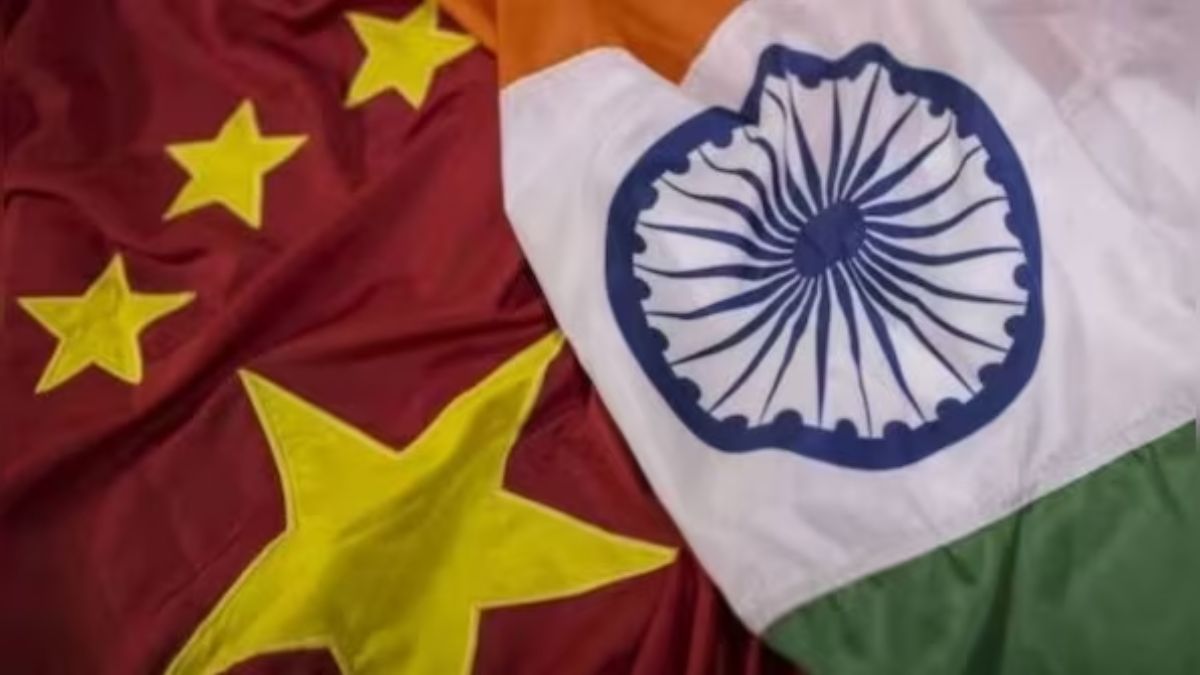India and Afghanistan have a deep rooted relationship. Afghanistan is a strategically important country, not only to India but to the entire region. It is India’s gateway to Central Asian republics.
Afghan people are fiercely independent and follow the Sunni sect that follows Hanafi Islamic Law. Tribal affinity and affiliation have been the hallmark of politics in Afghanistan. The country can proudly claim that no outsider has ever been able to subjugate her.
Afghanistan has been in a state of turmoil for the last 40 years. It all started with the Soviet invasion of Afghanistan in 1979. After a bitter 10 years of war, the Soviets finally withdrew in 1989. Then the Taliban came to power in 1996. And before the scars of the conflict with USSR could subside, came the global war on terrorism targeting Al-Qaeda, which had a foot hold in Afghanistan.
Ever since, Afghanistan has been in a constant state of turmoil. The 15-year presence of International Security Assistance Force (ISAF) has not brought the expected peace to Afghanistan. Pakistan’s role in Afghanistan has been one of retaining the influence in the political arena in that country. At best, it has been dubious in nature.
Afghanistan is at a very crucial juncture today: ISAF has withdrawn from Afghanistan; USA has approximately 9,800 troops deployed, supported by troops from a few other countries; Taliban, which has been fighting the Afghan government since it lost the power in 2001, has been gaining ground – it controls almost 10 percent and has influence over approximately 30 percent of the country.
Taliban has also been trying to engage in conventional battle. The battle for Kunduz in 2016 stands testimony to this strategy. For their part, the Afghan National Security Forces have been improving their combat capabilities and are becoming more and more successful in holding their own against the Taliban.
The elements that have been fighting the Pakistani Army in the troubled Orakzai area, have relocated themselves as part of the Islamic State (IS) –Velayat Khorasan in Nangarhar and Nuristan Provinces of Afghanistan. Given these circumstances, it is only natural that Afghanistan seeks military assistance to ward off the threats from Taliban and IS.
USA has been the largest assistance provider to Afghanistan. India’s assistance to Afghanistan has been mostly in the civilian field – in particular, in power plants, road construction and medical aid amounting to US$ 2 Billion. Another US$ 1 billion assistance is in the offing. In addition, India has been giving a lot of non-lethal military assistance. Last year, four MI 25 attack helicopters were given to Afghanistan.
This is a break from the past wherein India had refrained from supplying lethal equipment to other countries that have been in internal distress. An earlier case in point is Sri Lanka. During the Eelam Wars that the Sri Lanka Army fought against the Liberation Tigers of Tamil Eelam (LTTE), that country requested for support from India. At that time, India followed the policy of not supplying lethal weapons to Sri Lanka or for that matter, any other country. Partially, the decision was motivated by the domestic politics involving Tamil Nadu. That decision proved detrimental to the bilateral relations. In desperation, Sri Lanka turned to China and Pakistan. Both these countries were eager to fill the vacuum created by India’s decision. Pakistan even went to the extent of supplying artillery ammunition out of her General Staff reserves. India lost out on Sri Lanka’s good will. It is not that India did not help Sri Lanka. India helped by setting up radars and assisted the Sri Lankan Navy in the blockade of LTTE vessels. However, it did not fall in the same league of helping with lethal equipment. Therefore, not supplying lethal equipment to the elected governments when they have been facing problems comes with a price.
In 2013, Afghanistan gave a list of weapons and equipment that they would like from India. The then UPA government, following the erstwhile policy, did not supply that equipment. One of the reasons attributed to this stance was that the bilateral relations between India and Pakistan would be affected if India provides lethal equipment to Afghanistan.
A trilateral arrangement was suggested in 2014 through which equipment of Russian origin and spares for such equipment could be sent to Afghanistan directly by Russia, with India paying for it. This proposal also did not gain much traction. However, India has been providing non-lethal assistance in the form of vehicles, bullet proof jackets etc. India’s assistance in training thousands of Afghan National Army personnel has also been significant.
General Qadam Shah Shahim, Chief of Afghan National Army, gave another list of requirements to India during his visit to the country in August 2016. Prime Minister Narendra Modi and President of Afghanistan Ashraf Ghani met during the Heart of Asia Conference held in Amritsar in December 2016. Ghani seems to have raised the issue of defence cooperation. As per reports, in that meeting, Modi assured Ghani of “India’s continued support for ensuring peace and stability in Afghanistan.”
As stated earlier, in December 2015, India took the decision of handing over four MI 25 attack helicopters to Afghanistan. The last of the four was handed over to Afghanistan on 26 November, 2016. India seems to have come out of the moralistic shell with the supply of MI25 helicopters to Afghanistan. Afghanistan has also been seeking India’s assistance in making Soviet-era helicopters and transport aircraft, that are not in a flying condition, functional.
Having seen the background, let us see what increase in military assistance can be possible to Afghanistan. Some of the issues that can be looked into are the supply of lethal equipment, increase in numbers for training of ANA personnel, training of Afghan National Police, training of Afghan Women Police, increased cooperation in intelligence sharing, increasing the number of treatment centres for casualties, maintenance of equipment for both Afghan army and air force. Training of Afghan National Police and Afghan Women Police are not truly in the military domain. However, since they need to be in synergy with the security issues, they are mentioned here. The pros and cons of India’s military assistance should be seen in light of geo-political, internal dynamics and military implications.
The geo-political implications are to be seen in light of reactions from Russia, China, USA, Pakistan, Central Asian republics and Iran. Russia seems to be concerned about the influence of IS-Khorasan. Therefore, any additional effort by India that could reduce that threat should be welcomed by Russia. It is also likely that Russia is trying to make an entry back into Afghanistan. Increase in military assistance by India will be detrimental to that aspiration. Therefore, as far as Russia is concerned an element of caution needs to be exercised. With careful handling, Russia can be brought on board.
China filled in the vacuum when India did not supply lethal weapons to Afghanistan. In July 2016, China sent the first consignment of military assistance to Afghanistan. China’s interests are the Uighur threat from the border areas, threat from IS-Khorasan and its own economic interests. If the military assistance from India can mitigate the threats from IS and Uighurs, China may have no objection to that. However, if it impinges on its economic and political interests, China may not support that effort.
US will welcome any effort that can support the withdrawal of its forces. Pakistan will be opposing any such effort by India, as it could reduce its influence. Central Asian republics are likely to support India’s assistance if the apprehensions between Uzbekistan and Tajikistan are taken care of. Therefore, geo-politically, it may be worth the while to increase the military assistance to Afghanistan.
As far as the internal dynamics of Afghanistan are concerned, the not so smooth relationship between Ghani and Abdullah Abdullah can make such an assistance a bit tricky. The internal dynamics of Afghanistan are dominated by the tribal affiliations. These strong tribal affiliations need to be taken into account. Return of Gulbuddin Hekmatyar is likely to have an effect on the loyalties in the Kunduz Province. Pakistan’s role in supporting the Taliban will come into a contradiction with India’s increase in military assistance.
Amongst the military issues, there is a need to pay attention to the fact that the Indian armed forces themselves are short on weapons and equipment. Also, it is not adequate to only increase the military assistance in terms of weapons and equipment but systems need to be put in place to sustain and maintain them.
With the operations against the Taliban being prolonged ones, India needs to realise that it will be in it for the long haul.
Most of the equipment that India holds is of Russian origin. So are many of the equipment that Afghan armed forces hold. This similarity will assist in maintaining the equipment. Lastly, but not the least, India will have to get into an understanding with Russia, for supply of spares.
Keeping all the above points and the long lasting friendship India shares with Afghanistan in mind, it will be a positive development if India can increase the military assistance to Afghanistan. However, it should be in the realm of increase in training, medical aid, supply of both lethal and non-lethal equipment, creating structures for maintenance of the weapons and equipment and reconstruction.
There is a constituency that supports deployment of Indian troops in Afghanistan. India will be well advised not to fall for that trap and should not deploy troops other than the ones deployed for protection of the Indian mission and its assets.


)




)
)
)
)
)
)
)
)